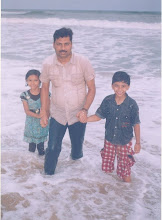Sujeet Kumar
Raipur, June 11, 2011 (IANS) Hardly a week after a 500-strong army deployment landed in Chhattisgarh's Bastar region for the first time, Maoists Thursday midnight launched their most deadly attack - using nearly a tonne of explosives, the highest ever, blowing up an anti-landmine vehicle and killing 10 policemen.
The June 9 attack in Dantewada district, said to be the biggest rebel raid in terms of the quantity of explosives used in a single attack, is seen by experts as the Maoists way of taunting the army men.
Earlier the same day, the rebels gunned down five policemen in Narayanpur district.
In another raid, the Maoists attacked a CRPF camp Saturday and killed three jawans in Dantewada district.
The presence of the army has apparently not made any impact on the rebels, much to the worry of the security top brass in the state.
Over 500 army personnel descended for the first time in the heart of a Maoist insurgency-hit area in Bastar region between May 30-June 2. The deployment, according to security experts, was to "psychologically hit the rebels".
The army, however, explained that they have stepped into the violence-hit territory only "for jungle warfare training, and not for anti-Maoist operation".
A top police official who served in Chhattisgarh's "war zone" for a long period, said he suspected that Maoists had used about a tonne explosives for the June 9 Dantewada blast.
"Look at their (Maoists) guts. They are hitting police using a tonne of explosives to toss up an anti-landmine vehicle in the presence of the army in Bastar. The double attack on June 9 was aimed at taunting the army," the police officer told IANS.
The forested pocket where the Maoists gunned down five policemen June 9 morning in Narayanpur district is adjacent to a sprawling base camp area allotted by Chhattisgarh government to the army's central command for developing a jungle warfare training camp, the official said.
"The midnight attack was the biggest carried out by Maoists in terms of the quantity of explosives they used," counter-terrorism expert Brigadier (Retd.) B.K. Ponwar told IANS.
"It was not less than 60 kg explosives they used to blast the anti-landmine vehicle. It went up in the air several metres and then landed in pieces," Ponwar added.
According to Ponwar, who is director of the Bastar-based Counter Terrorism and Jungle Warfare College, the previous biggest attack in terms of quantity of explosives - 40 kg - was in September 2005 when an anti-landmine vehicle was blasted for the first time. The attack killed 24 CRPF men.
Ponwar, who is a former commandant of the Indian Army's Counter-Insurgency and Jungle Warfare School at Vairengte in Mizoram, said "the twin attacks in Bastar region June 9 and 10 clearly indicate that the Maoists are showing their defiance to the presence of the army".
He wondered why the police forces are flouting jungle warfare manuals over and over again.
A police official posted at Dornapal in Dantewada district that witnessed several deadly attacks in recent years, said: "We usually rush to the jungles on a single-source information that is mostly planted by rebels to trap us in landmine sites.
"Thursday midnight too the rebels planted information of Maoists gathering at a certain place and police moved without checking and rechecking the input. Finally we paid for it."
"It looks like the Maoists have night vision devices too that are helping them to trigger landmine blasts even late at night," he added.
Chhattisgarh has suffered nearly 2,200 casualties of police personnel and civilians related to Maoist violence since it formed as a separate state in November 2000.
Some 90 percent casualties were reported in landmine attacks in the Bastar region that has about 20 percent of the country's iron ore deposits.
Subscribe to:
Post Comments (Atom)

No comments:
Post a Comment